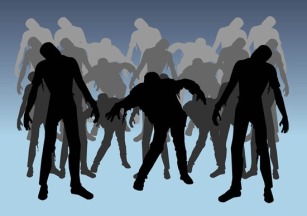I love giving books as baby presents. Long after the adorable onesies and outfits have been outgrown, the books remain. In addition to the twenty copies of Eric Carle’s The Very Hungry Caterpillar that we received when my son was born, we also got a copy of Mole and the Baby Bird– a beautiful story by Marjorie Newman. With a sweet narrative and gentle drawings, Newman and illustrator Patrick Benson tell the story of young mole who finds an abandoned baby bird and adopts it.
Mole responsibly cares for his pet bird despite the admonitions of his parents that it is not a pet bird, but a wild one. When the bird begins to fly, Mole builds a cage for it, not wanting it to fly away. The bird is sad. Mole is sad and his parents are sad. His parents tell him the bird should be free.
Up until this point, all the pictures in the books are small and framed by white space on the page. Then, Mole’s grandfather takes him on a walk- allowing Mole to walk in open fields- and the illustrations suddenly take over the whole page. The reader feels as Mole does- “I’m flying” or “nearly,” as grandpa says. Mole, standing on a hillside with a bird’s eye view, suddenly understands his bird. Having experienced the freedom and openness of the field, Mole returns home and sets his bird free “because he loved it. Then he cried.” But we are told that the “next day Mole went into the forest. He saw his bird flying, soaring, free. And Mole was glad.”
The story can clearly be understood as an object lesson in “If you love someone, set them free.” But I think there is a more subtle lesson in the book- and one that is important for parents, friends, teachers, and coaches alike. Mole cannot hear what his parents tell him. It is not real for him and he cannot quite get out of his own perspective and find another way of viewing the situation. It is mole’s grandfather who, without saying a word about the baby bird, is able to help Mole do the right thing.
By allowing Mole to experience what it means to be a bird, Mole’s grandfather lets Mole come to the realization himself. It is only when Mole is empowered to discover things on his own, that he is able to grow.
Too often as parents we want to protect our children. As friends, we are often convinced of the right way of doing things. As teachers we want to instruct our students in the correct way to learn. And sometimes as coaches we have wishes for our clients. We want to tell these people that we care for the right way to do things and keep them from feeling hurt or pain. We want to teach them the lessons where it is safe. But when we do this, we deny them the opportunity to learn it for themselves.
In the story, Mole’s grandfather takes Mole on a journey of self-discovery. He allows Mole to experience the world and come to his own conclusions. In the end, Mole makes a painful and difficult decision. But it is his decision. There will not be a book focusing on Mole the adolescent or young adult complaining to his therapist that his parents made him set the bird free and that he has been resentful ever since. Mole will grow up knowing he owned his choices- however difficult they may have been- and he will be a better adult mole for it (or so I imagine).
We must learn to support our children, friends, students and clients on their journeys- helping them see their own potential and find their own paths. It is not always easy- but if we love them, we must set them free.



